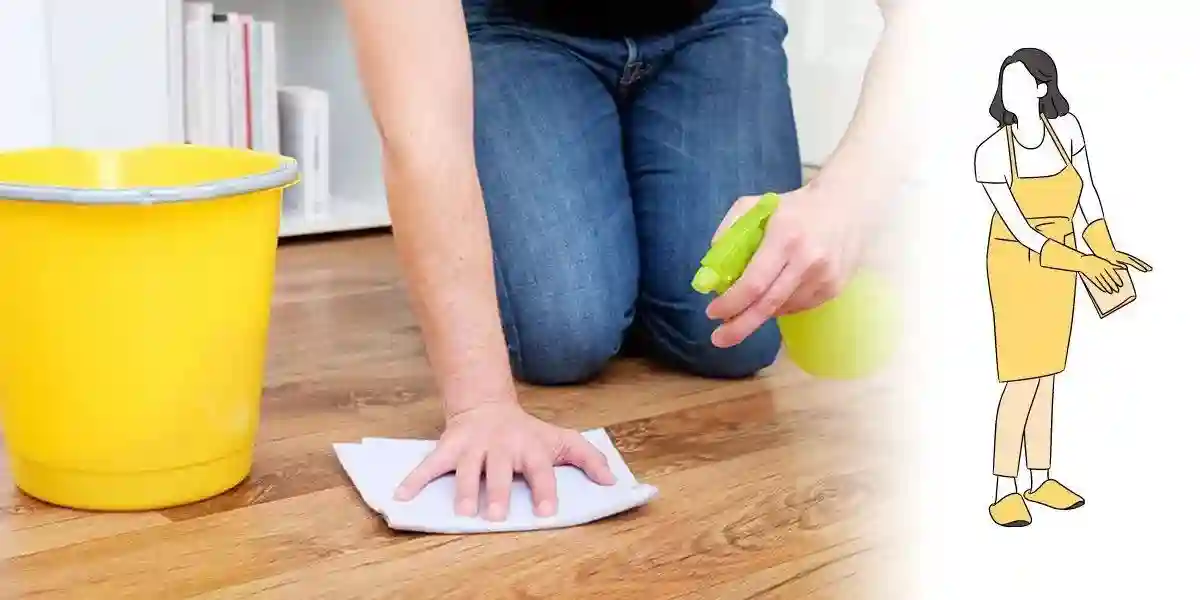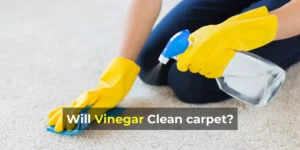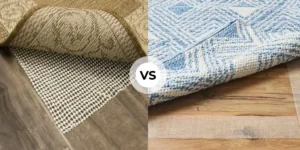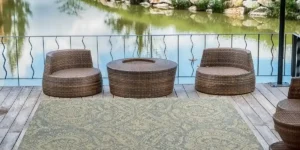Linoleum is an attractive and durable flooring material with a shiny finish. It complements modern spaces. This is a durable and long-lasting floor covering.
But still, maintenance is key to keeping it looking clean and fresh.
Well, you are not only one, we all love the clean and polished look of linoleum floors. But over time, they can lose their luster and develop a yellowish tint that just doesn’t sit right.
Another reason is continual exposure to elements such as dirt, stains, and spills. Which can tend to discolor and yellowing the linoleum floor.
As the yellowed floor is not permanent. You can handle this in some effective ways.
So, we have selected a few proven cleaning hacks that can help you restore it to its former glory.
Also, in this article, you will find easy-to-do homemade cleaning tricks. That can tackle the need for professional cleaning services. But first, learn why linoleum floors are yellow before choosing the right cleaning solution.
Causes of Yellowing on Linoleum Flooring
Oxidation
The primary cause of yellowing on linoleum is oxidation. When your linoleum and air interact a little, oxidation happens.
Due to its natural tendency for oxidation, linseed oil presents a built-in flaw as it ages over time. Eventually, oxygen in the air reacts with the linoleum, causing a slight discoloration.
Use of Harsh Chemical Cleaners
When you use a strong cleaner on linoleum floors can lead to yellowing. Harsh chemical cleaners with ammonia ingredients are not recommended for cleaning linoleum flooring.
Ammonia has alkaline properties and it is corrosive. So, it can eat away at the floor’s protective coating when applied to linoleum.
It makes linoleum more susceptible to discoloration and damage. On that note, you should carefully select cleaning products with neutral pH.
Must See: Can You Use Goo Gone on Laminate Flooring? (Explained)
Poor Exposure to Sunlight
Lack of sunlight will enhance linoleum’s natural tendency to oxidize, resulting in yellowing. It is clear when rugs cover the floor, as they block sunlight from reaching the linoleum.
So, it is recommended to open the windows and allow sunlight. It offsets discoloration and enhances the stability of linseed oil properties.
But still, it would be wise to focus the light on the affected area. And periodically expose linoleum to sunlight to avoid any discoloration in the future.
Linoleum Ages with Continuous Waxing
A yellowing linoleum floor is likely to be caused by years of waxing, spills, dirt, and stains. When waxed, it attracts dust and dirt particles over time because of its shiny appearance.
But still, the excess wax collects dirt, making your floor lose its luster. So, instead of overdoing it, find a balance. Wax when needed, but don’t go overboard to keep your linoleum looking fresh.
So, years of layered waxes leave the floor looking less bright than when it was first installed.
Must See: How to Remove Candle Wax from Laminate Flooring? (4 Easy Steps)
Use of Rubber Stoppers and Casings
Rubber stoppers and casings protect against high-pressure impact from heavy objects.
Yet, it is not a wise idea for a linoleum floor. Because they contain antioxidants that react to the floor. And causing discoloration that is difficult to remove.
Must See: How to Remove Scuff Marks from Laminate Flooring? (4 Helpful Solutions)
Cleaning Linoleum with Hot Water
Hot water can also cause discoloration of the linoleum flooring. Because it weakens the protective coating over time. Hence, predisposing it to other elements like dirt, stains, and causing discoloration.
Effective Ways to Clean Linoleum Floors That Have Yellowed
Using White Vinegar and Water
- Mix a 1:1 (a gallon of water, a cup of vinegar) solution of white vinegar and cold water.
- And apply it directly onto the yellowing stain. Allow it to sit for about 10-15 minutes to impact the stain.
- Then wipe the surface with a lint-free cotton cloth or sponge and rinse the surface with tap water.
- If the stain is stubborn, reapply the solution of white vinegar with water on the stain. Sprinkle baking soda over the solution and allow it to sit for about 5-10 minutes.
- Then, take a soft-bristled nylon brush or any soft cloth and use it to damp mop over the baking soda.
- After the stains disappear, use clean and cold tap water to damp mop up the residue. Dry the surface with a clean and lint-free cloth.
Baking Soda and Lemon Juice
Make a paste of baking soda and lemon juice by mixing them and then applying them directly to the yellow stains.
Let it sit for a few minutes for the paste to ease the contact between the surface and the stain.
Then, take a toothbrush and gently work on the surface for a few minutes to effectively remove the stains. If the blemish has spread widely, use a brush with larger bristles.
Once you see that the discoloration has disappeared, wipe the surface with a damp sponge. And immediately dry the surface using a lint-free cotton cloth.
Bleach and White Vinegar
Mix a quart of bleach in one gallon of water, and apply to the floor with a damp, lint-free cloth. Let the solution soak the stained surface for about 30-45 minutes to loosen the stain.
Soak the solution with a sponge and then rinse the surface with cold water.
Next, fill up a bucket with a dash of white vinegar and water {a gallon of water, a cup of vinegar}. After that, damp a mop in the solution and use it to mop the entire floor. Once you have finished mopping, rinse the entire floor with cold water again.
Repeat this process for a couple of weeks to tackle the stains.
Bleach and Baking soda
Mix a quart of bleach in one gallon of water, and apply to the floor with a damp, lint-free cloth. Let the solution soak the stained surface for about 30-45 minutes to loosen the stain.
Soak the solution with a sponge and then rinse the surface with cold water. If the stain is stubborn, reapply the solution and sprinkle baking soda over the bleach mixture. It will lift the stain quicker and enhance the whitening action.
Damp-mop the surface, rinse using cold water from the tap, and dry the surface with a lint-free cloth.
To Conclude
Do not use cleaning products containing ammonia. Because it can enhance further discoloration and even harm the protective coating. It is best to use cleaning products with neutral pH.
Always let in sunlight in the house to treat your linoleum to keep its color and avoid discoloration. But ensure you regulate the light intensity and duration.
Do not use rubber stoppers castings, and rugs on linoleum. Because they leave behind ugly stains that are stubborn to get rid of.
Do not use warm water on linoleum because it weakens the protective coating.
Read More on Laminate Floors
- Can You Nail Down Laminate Flooring? (Answered)
- Laying Laminate Flooring: 13 Common Mistakes to Avoid!
- 7 Best Ways to Fix Peeling Laminate Floor (Must-Try!)
- Will Acetone Damage the Laminate Floor? (Explained)
- 9 Best Ways to Keep Rugs From Slipping on Laminate Floors (Must-Try!)





